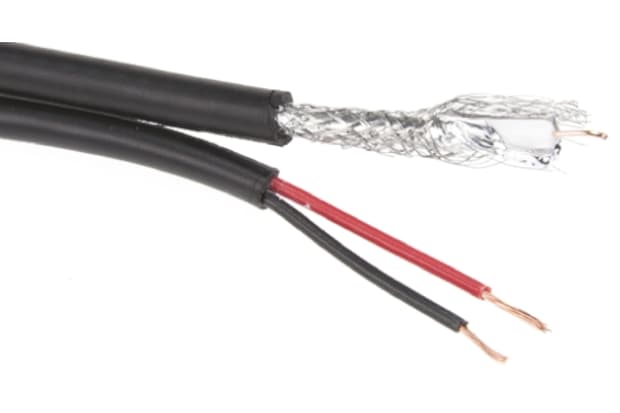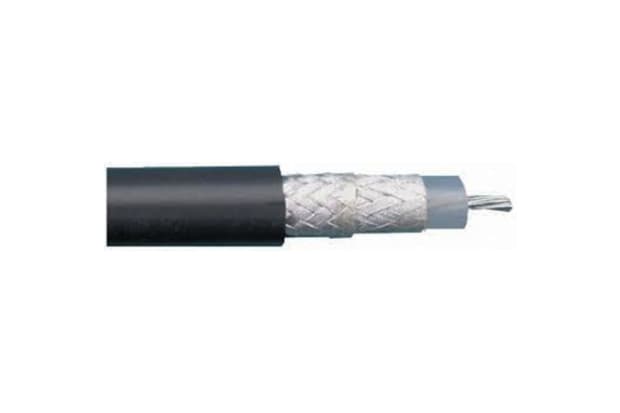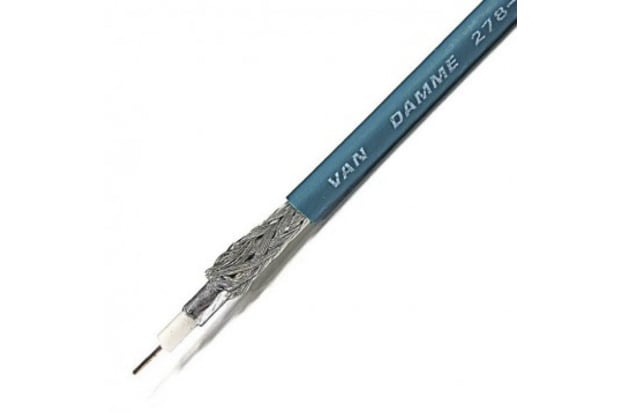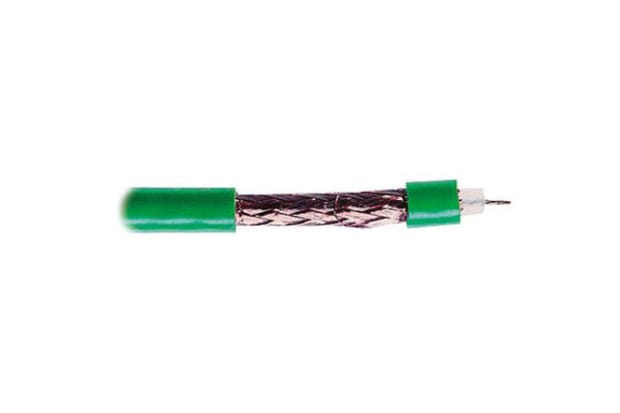- Published 9 Mar 2023
- Last Modified 28 Mar 2023
- 8 min

What is Coaxial Cable?
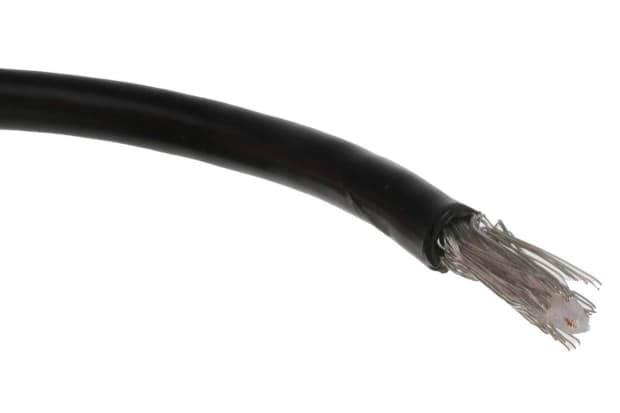
Coaxial cable, sometimes known as coax cable, is an electrical cable that transmits radio frequency (RF) signals from one point to another.
The technology has been around since the early 20th century, with these cables mainly being used to connect satellite antenna facilities to homes and businesses thanks to their durability and ease of installation.
What is RG cable?
There are different types of coaxial cable, which vary by gauge and impedance. Gauge refers to the cable’s thickness and is measured by the radio guide measurement or RG number. The higher the RG number, the thinner the central conductor core is.
What does a Coaxial Cable look like?
Coaxial cable has a distinct thick, round shape because of its interior insulation layer. Its size makes it look very different to other types of cable, such as twisted pair or Ethernet cable. The most commons sizes of coaxial cable are RG-6, RG-11 and RG-59 – some of the size differences are demonstrated in the image below.

Coaxial cables are available in a variety of colours including black, brown and white.
How do Coaxial Cables work?
Coaxial cables are a popular choice because their shielded design allows the centre conductor to transmit data quickly while being protected from damage and interference.
Coaxial cables are mainly built up of these four different layers:
- A centre conductor which is usually a copper wire, which data and video travels through
- Surrounding the copper wire is a dielectric plastic insulator
- A braided mesh made from copper then helps to shield the cable from electromagnetic interference (EMI)
- The external layer is a plastic coating which protects the internal layers from damage
Coaxial cable works by carrying data in the centre conductor, while the surrounding layers of shielding stop any signal loss (also called attenuation loss) and help reduce EMI.
The first layer, called the dielectric, provides distance between the core conductor and the outer layers, as well as some insulation.
The next layers, collectively referred to as the shield, keep electrical impulses and radio transmissions out. The different layers of a coaxial cable are shown in the image below:

What is the transmission speed of Coaxial Cable?
The transmission speed of coaxial cable is 10Mbps (megabits per second), and they offer 80 times more transmission capacity than twisted pair cables.
Coaxial cable advantages and disadvantages
Advantages of coaxial cable
- Inexpensive
- Easy to wire and install
- Easy to expand
- Good resistance to EMI
- Up to 10Mbps capacity
- Durable
Another benefit of coaxial cable is the electromagnetic field carrying the signal exists only in the space between the inner and outer conductors. This means coaxial cable can be installed next to metal objects without losing power, unlike other types of transmission lines.
Disadvantages of coaxial cable
The main disadvantage of using coaxial cable is that single cable failure can take down an entire network.
Coaxial cable types
There are two main types of coaxial cables – ones with an impedance of 75 Ohm (Ω) and ones with an impedance of 50 Ohm.
Cables with 75 Ohm are mostly used for video signals, while 50 Ohm cables tend to be used for data and wireless communications.
In coaxial cables, Ohm refers to the impedance, which is the measure of resistance in the cable to the flow of electrical energy.
What’s RF coaxial cable?
RF coaxial cables are used to carry radio frequency signals. They’re the standard input cable on TVs and feature a single pin that plugs into the RF input on a device.
What’s RG-6 cable?
RG-6 cables have larger conductors, so they provide better signal quality. They have thicker dielectric insulation and are made with a different kind of shielding, allowing them to handle GHz level signals more effectively. As this type of cable is thin, it can also be easily installed in walls or ceilings.
What’s RG-59 cable?
A common cable in domestic settings, RG-59 cable is similar to the RG-6, but it has an even thinner centre conductor. This makes it a good choice for short runs and low-frequency transmissions.
What’s RG-11 cable?
RG-11 cable is easily identifiable as it’s thicker than other types of coaxial cable, which can make it more difficult to work with. However, it offers a lower attenuation level than RG-6 or RG-59, meaning it can carry data for longer distances.
What are Coaxial Cables used for?
Here are some of the different uses for coaxial cable and which type is most suited for the task:

Coaxial cable for TV
Poor quality coaxial cable can impact TV reception, so it’s important to choose the best cable for the job.
Coaxial cable designed for domestic television should be 75 Ohm, with RG-6 coaxial being ideal for TV.
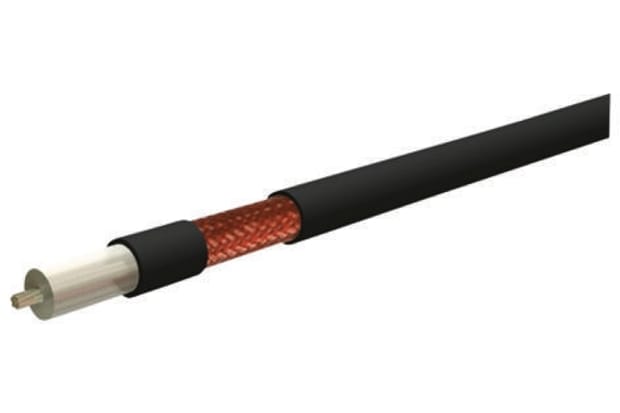
Coaxial cable for HDTV (high-definition)
The best coaxial cable for HDTV isRG-11.
This type of cable offers a higher gauge than others, which provides more space for signals to transfer. This makes RG-11 cable adept at transferring strong HD signals at speed.

Coaxial cable for the internet
Coaxial cables can be used to carry signals for internet connections, but internet signals run at higher frequencies than traditional analogue video.
RG-6 cable was designed to fulfil this requirement. It has a larger conductor, which provides a much better signal quality, and the dielectric insulation is thicker. RG-6 cables are also made with a different kind of shielding, which means they can carry GHz level signals more effectively.
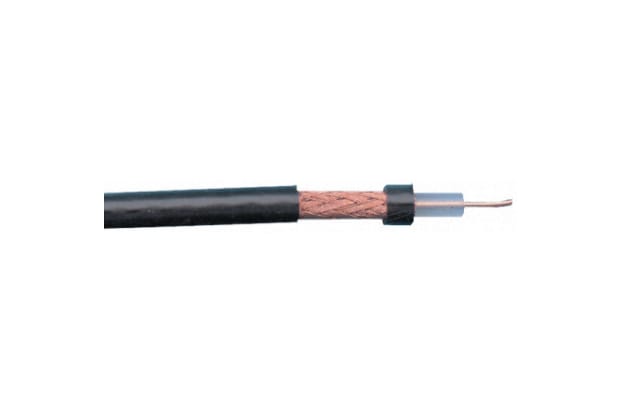
Coaxial cable for CCTV
RG-59 coaxial cable is the best type for CCTV systems, but RG-6 can also be used.
RG-6 can run longer distances than RG-59 without loss to a video signal, however, it’s a thicker, firmer cable that isn’t as convenient to work with.
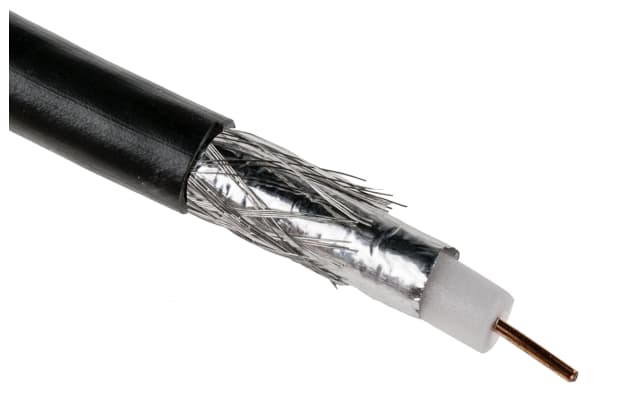
Coaxial cable for video
The most common types of coaxial cable for video are RG-59 and RG-6. Of these, RG-59 is the industry standard cable, whereas RG-6 is better for digital video signals.
What is a coaxial splitter?
When coaxial cable lines are produced, they only provide one signal to power a singular device. This can be problematic if there’s more than one device that requires a signal.
Coaxial splitters are used when there’s more than one device that requires a signal. They’re small devices designed to attach to coaxial cable to split the signal into several lines to connect to multiple devices.
What is a coaxial port?
A coaxial port is a single female RCA connector. The port on a device is most likely to be labelled as 'coaxial', but could also be something such as 'digital out' or 'digital in'. To help distinguish it, the coaxial port is usually colour-coded orange or black.
Coaxial Cable Sizes
To help identify the different types of coaxial cable, here’s a size guide:
Coaxial Cable Type | Outside Diameter (Metric) | Outside Diameter (Imperial) |
|---|---|---|
RG-58 | 4.95mm | 0.195" |
RG-59 | 6.15mm | 0.242" |
RG-6 | 6.90mm | 0.275" |
RG-62 | 6.15mm | 0.242" |
RG-11 | 10.30mm | 0.405" |
RG-12 | 14.10mm | 0.555" |
RG-213 | 10.30mm | 0.405" |
Coaxial cable connector types
Coaxial cable connectors are used to connect cables to other devices and maintain the cable’s shielding.
There are two distinct connector styles – known as male and female. Male connectors have metals pin which protrude from the centre and female connectors have a recessed hole to receive the pin.
Here are some of the most common coaxial connector types and their applications:
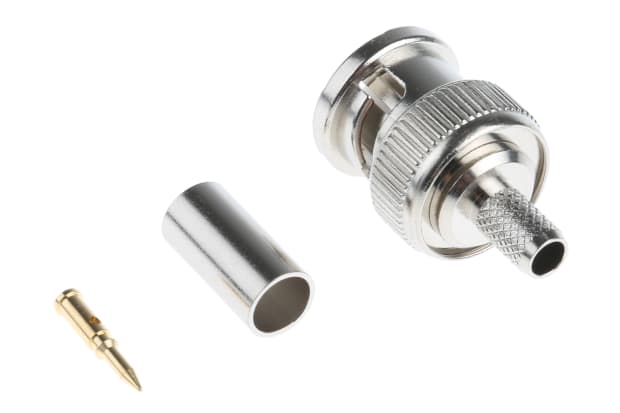
BNC Connector
Bayonet Neil-Concelman (BNC) coaxial connectors are used for quick connection or disconnection in RF equipment, test instruments, radio, television, and video signal.
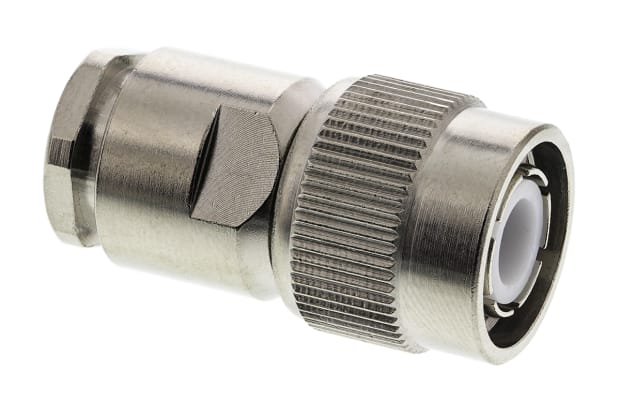
TNC Connector
The Threaded Neill-Concelman (TNC) connectors are small, weatherproof products that operate up to 12GHz. They’re often used in mobile phones and RF/antenna connections.
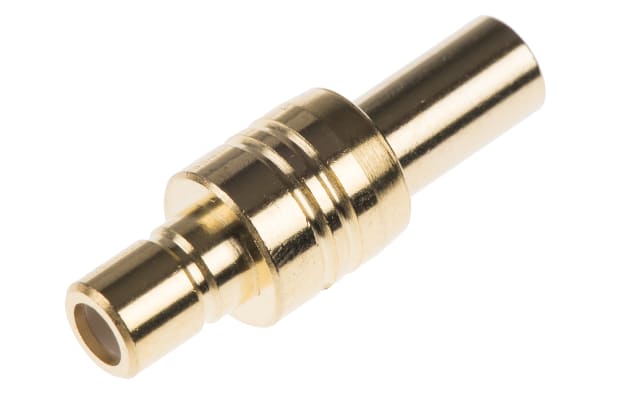
SMB Connectors
Subminiature version B (SMB) connectors are one of the most popular RF/microwave connectors for industrial and telecommunications equipment – offering a simple snap-on coupling design for cables with uncommon connections.
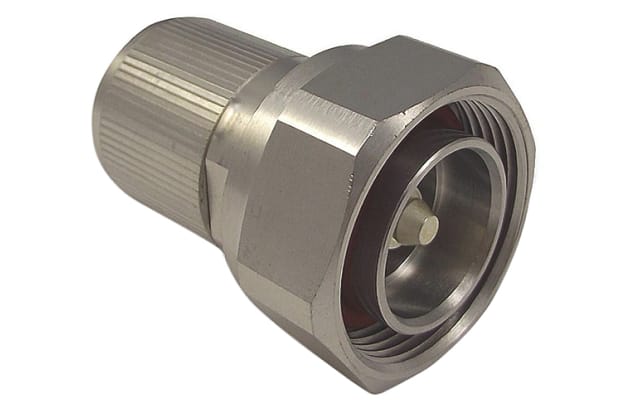
7/6 DIN Connector
The 7/16 DIN (Deutsches Institut für Normung) connector is a threaded RF connector used to connect coaxial cables.
These connectors are mainly used for applications that require water resistance, as they’re robust and durable. They’re particularly useful for base stations and broadcast communication systems.
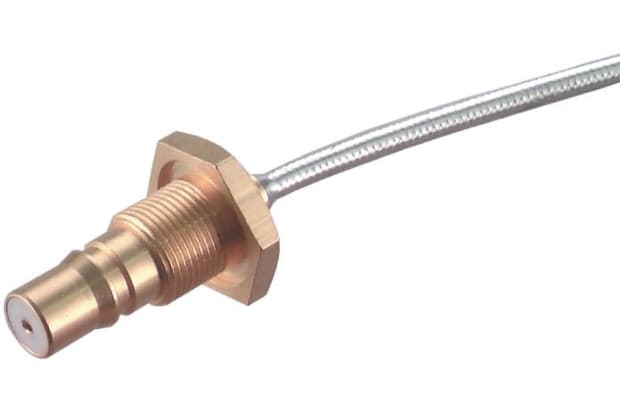
QMA Connectors
QMA connectors are coaxial radio frequency connectors. They maintain the shielding barrier in electrical applications and feature snap-on mechanisms. They’re ideal for industrial and communications settings.
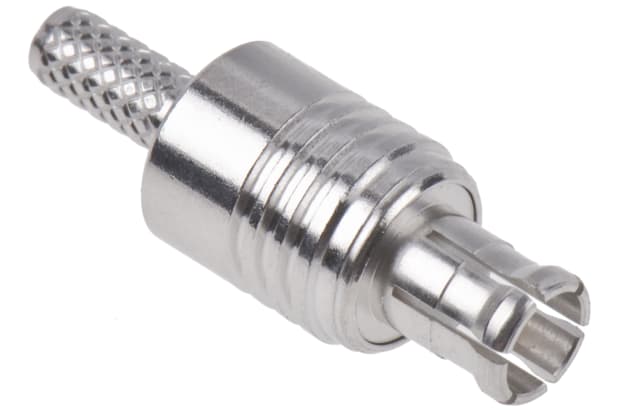
MCX Connector
Micro coaxial (MCX) connectors are ideal for environments restricted in size or space.
MCX connectors operate between DC and 6GHz in wireless, GPS, TV tuner cards, RF hardware, and digital cellular applications. These connectors also have a snap-on coupling design for easy installation

RCA Connectors
The Radio Corporation of America (RCA) connector, also called a cinch connector, is widely used for audio and video applications.
Product spotlights
Use one of these links to view the products on the RS website
